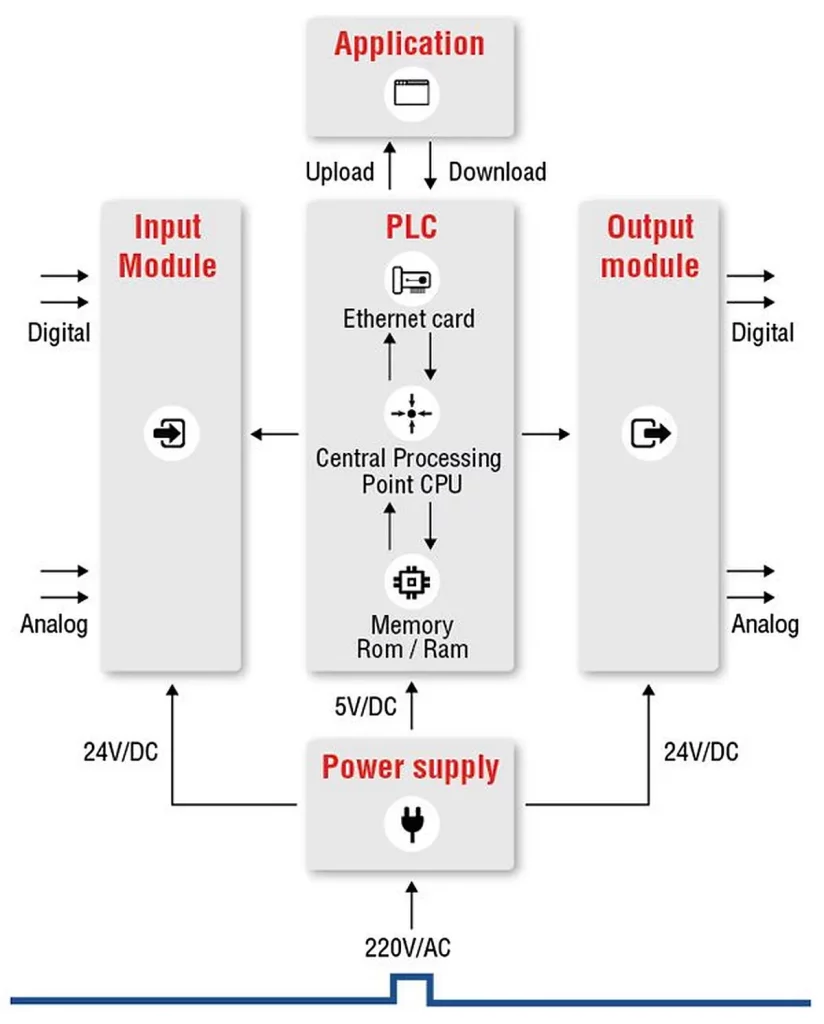PLC (Programmable Logic Controller) automatic control is a widely used technology in industrial automation. It involves utilizing a specialized digital computer to control various processes and machines in an industrial setting. The principle of PLC automatic control is based on executing a pre-programmed set of instructions to perform specific tasks.

Step 1: Sensing
To begin with, in PLC automatic control, we employ sensors to gather data from the environment or the machines being controlled. These sensors provide input signals to the PLC, representing the current state of the controlled system.
Step 2: Processing
Once the PLC receives input signals, it processes the data using the programmed instructions stored in its memory. These instructions encompass logical operations, arithmetic calculations, and decision-making algorithms.
Step 3: Decision-making
During the decision-making phase, the PLC analyzes the processed data and determines the appropriate actions to take. This involves comparing the current data with predefined setpoints or conditions.
Step 4: Output Control
After making decisions, the PLC enters the output control phase. Here, the PLC sends control signals to actuators, which are devices responsible for making changes in the controlled system. These actuators can be motors, valves, or other devices that influence the process.
Step 5: Feedback
Feedback is an essential aspect of PLC automatic control. Once the actuators make changes based on the PLC’s instructions, sensors provide feedback on the new state of the system. This feedback helps in verifying whether the desired control objective has been achieved.
Step 6: Iteration
PLC automatic control involves a continuous iteration process. The PLC continuously monitors the feedback and makes adjustments as needed to maintain the system in the desired state.
Advantages of PLC Automatic Control
– One of the key advantages of PLC automatic control is its fast and accurate response to changing conditions.
– Another benefit is its flexibility in reprogramming for different processes.
– Additionally, it offers high reliability due to the absence of mechanical components.
– Furthermore, centralized control simplifies the management of complex systems.
Conclusion
In conclusion, PLC automatic control is an efficient and reliable method used in industrial automation. Its principle is based on sensing, processing, decision-making, output control, feedback, and iteration. By following these steps, PLCs can effectively control various industrial processes, leading to increased productivity and efficiency.
 6G Controls - Leading Supplier of New & Original PLC 、DCS Parts and Automation Controller
6G Controls - Leading Supplier of New & Original PLC 、DCS Parts and Automation Controller
